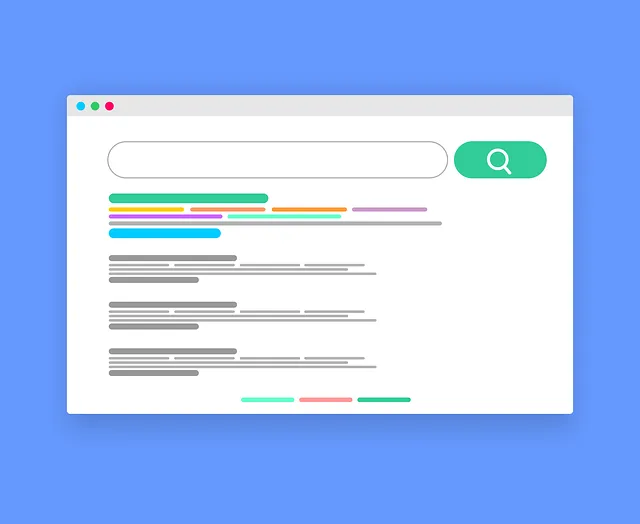SEO Content Optimization is a powerful strategy to enhance online presence. It involves aligning web content with search engine algorithms by carefully researching, selecting, and naturally incorporating relevant keywords. This process includes on-page techniques like optimizing titles, meta descriptions, headings, and image alt tags, as well as internal linking and URL structure for improved user experience. Off-page SEO focuses on building authority through high-quality content creation and earning backlinks from reputable sources. Regular analysis using analytics tools is crucial to measure performance and refine strategies for better search rankings, increased organic traffic, and higher conversion rates.
“Unleash your website’s full potential with our comprehensive SEO Workshop, designed to elevate your online presence. In this guide, we’ll take you on a journey through the essentials of SEO Content Optimization, the cornerstone of digital visibility. From keyword research to crafting captivating content and mastering on-page techniques, we’ll unlock strategies to boost rankings. Learn how to build authority and earn valuable backlinks off-page. Discover powerful tools for measurement and analysis, ensuring your SEO efforts yield tangible results. Get ready to optimize with confidence.”
Understanding SEO Content Optimization: The Foundation of Online Visibility

SEO Content Optimization is a fundamental strategy that forms the backbone of any online presence and visibility. It involves meticulously crafting web content to align with search engine algorithms, ensuring it ranks highly on search results pages (SERPs). By optimizing content, businesses can increase organic reach, attract their target audience, and ultimately drive more traffic to their websites.
At the core of SEO Content Optimization is keyword research and strategic placement. Identifying relevant keywords and incorporating them naturally into your content signals to search engines what your webpage or article is about. This process goes beyond simply stuffing keywords; it’s about creating valuable, informative, and engaging content that resonates with readers while aligning with their search queries. Effective optimization also includes optimizing meta titles, headings, and descriptions to enhance click-through rates and encourage users to engage with the content.
Unlocking Keywords: Researching and Selecting the Right Terms

Unlocking Keywords: Researching and Selecting the Right Terms is a crucial step in SEO Content Optimization. It involves understanding your target audience, their search behaviors, and the competitive landscape for relevant keywords. By leveraging tools like Google Keyword Planner, SEMrush, or Ahrefs, you can identify high-volume, low-competition keywords that align with your content strategy. These tools provide insights into search trends, suggest related terms, and help assess keyword difficulty, enabling you to make informed decisions.
Selecting the right keywords isn’t just about relevance; it’s also about intent. Matching your content to user queries ensures that your audience finds what they’re looking for, enhancing user experience and boosting engagement. Additionally, focusing on long-tail keywords—more specific phrases with lower search volume—can lead to higher conversion rates as these users are often closer to making a purchase or taking a desired action.
Crafting Engaging and Optimized Content: Strategies for Success

Creating engaging content is an art, but optimizing it for search engines is a science. Balancing these two aspects is crucial for achieving success in SEO Content Optimization. The key lies in understanding your target audience and their information needs while incorporating relevant keywords naturally and contextually. By doing so, you ensure that your content not only captivates readers but also aligns with search engine algorithms.
Effective strategies involve thorough keyword research to identify high-value terms and phrases. This process guides the entire content creation journey, from topic selection to writing and structuring the piece. Additionally, maintaining a logical flow of ideas and using headings, subheadings, and bullet points can significantly enhance readability and SEO performance. Regularly updating content with fresh insights also keeps it relevant and encourages search engines to prioritize it in results.
On-Page SEO Techniques: Maximizing Your Web Pages' Potential

On-Page SEO Techniques are essential for maximizing the potential of your web pages and improving their visibility on search engines. The primary focus here is to optimize content, titles, meta descriptions, and headings to make them more relevant and engaging for both users and search algorithms. One key strategy is keyword optimization, where you strategically place target keywords in your page’s content, ensuring a natural flow that enhances readability without compromising quality.
Additionally, optimizing image alt tags, internal linking, and structuring your URL are crucial steps. These elements work together to create a user-friendly and search engine-friendly environment, boosting your site’s rankings over time. By implementing these on-page SEO techniques effectively, you can significantly improve the overall health of your website and attract more organic traffic.
Off-Page SEO: Building Authority and Backlinks

Off-page SEO is a strategic approach focused on enhancing your website’s authority and visibility outside your direct control. One of its key components, building authority, involves establishing your brand as a trusted resource within your industry. This can be achieved through consistent, high-quality content creation that provides genuine value to users. By consistently publishing SEO content optimized for relevant keywords, you attract organic traffic and earn the respect of both search engines and potential link partners.
Backlinks play another vital role in off-page SEO. These are incoming links from other websites that direct users and search engine crawlers to your site. High-quality backlinks from reputable sources signal to search engines that your content is valuable, trustworthy, and worthy of a higher ranking. Strategies for acquiring backlinks include guest blogging on relevant sites, creating shareable infographics or resources, and building relationships with influencers in your niche who can promote your content to their audiences.
Measuring and Analyzing Results: Tools for Evaluating Your SEO Efforts

Measuring and analyzing the results of your SEO efforts is a crucial step in understanding what’s working and where there’s room for improvement. It involves evaluating key metrics like organic traffic, search rankings, click-through rates (CTRs), and conversion rates to assess the effectiveness of your SEO content optimization strategies.
There are numerous tools available that can help you gain insights into these metrics, such as Google Analytics, Search Console, SEMrush, Ahrefs, and Moz. These tools provide data on keyword rankings, backlink profiles, click paths, user behavior, and more. By regularly monitoring and analyzing this data, you can make informed decisions to refine your SEO approach, targeting the right keywords, optimizing content for better search visibility, and ultimately driving higher conversion rates.
